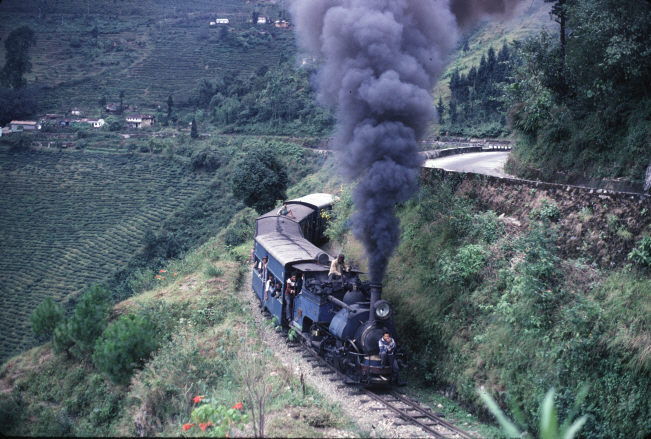Pictures
http://emergingindia.files.wordpress.com/2008/11/india_tourism_.gif
http://indiafashionexpo.com/shopping/images/saree495ife.jpg
http://i680.photobucket.com/albums/vv164/neeshu30/Salwar%20kameez/Salwar_kameez5.jpg
http://www.womenxone.com/lehnga/bridesmaid-lehnga-choli/attachment/bridesmaid-lehenga-choli-3/
http://www.entertainmentpk.com/wp-content/uploads/2009/09/Embroidered-Salwar-Kameez.jpg
http://www.gymnasium-spaichingen.de/bili/india/bilder/dorf5.jpg
http://www.anthonychristian.co.uk/dhoti.jpg
http://salwarqameez.com/men/churidar-salwar-kurta.jpg
http://visionsandperceptions.files.wordpress.com/2007/12/lungi1.jpg
http://www.gymnasium-spaichingen.de/bili/india/bilder/kshatriya.jpg
http://www.gymnasium-spaichingen.de/bili/india/bilder/brahmane.jpg
http://www.gymnasium-spaichingen.de/bili/india/bilder/vaishya.jpg
http://www.gymnasium-spaichingen.de/bili/india/bilder/shudra.jpg
http://www.milligazette.com/image2003/2005/121_Disaster-Dalit-in-front.jpg
http://grtu.net/data/images/Article_images/heaven.jpg
http://www.ohmyweird.com/wp-content/uploads/2007/05/baby%20vs%20cobra.jpg
http://www.ceeby.com/hindurituals/images/tilak.jpg
http://www.trusted-gourmet.com/wp-content/uploads/2009/03/almirage3.jpg
http://images.forbestraveler.com/media/photos/inspirations/food-drink/spiciest-foods-01-g.jpg
http://momsbiryani.com/yahoo_site_admin/assets/images/b3.97144645_std.jpg
http://farm4.static.flickr.com/3326/3265913915_a3ac7a24f3.jpg
http://desimithai.com/images/samosa.jpg
http://www.tribuneindia.com/2007/20071112/jal.jpg
http://comments16.com/desi/wp-content/uploads/2009/08/diwali-swastika.jpg
http://topnews.in/law/files/dussehra-rally.bmp
http://nvonews.com/wp-content/uploads/2009/09/Eid-ul-Fitr2.jpg
https://wikiflex.wikispaces.com/file/view/jaipur.jpg/133922117/jaipur.jpg
http://farm1.static.flickr.com/119/287598698_66fa58d6a0.jpg?v=0
http://www.templesofindia.co.cc/amritsar-golden-temple.jpg
http://www.bestgkworld.com/images/southafrica.jpg
http://dancingfreak.files.wordpress.com/2010/08/taj-mahal-india.jpg
http://www.realbollywood.com/news/up_images/goa4926.jpg
http://www.go2holiday.com/wp-content/uploads/2009/06/toy-train-darjeeling.jpg
http://www.artknowledgenews.com/files2010mar/MF-Husain-Tribal-Girl.jpg
http://www.indianfood-recipes.com/images/bags_indian_spices.jpg
Online videos
http://www.youtube.com/watch?v=7G0C9uvLuQk
Books
Kumar, A., & Singh, K. (2008). Tourism in India. In A. Kumar, & K. Singh, Tourism in India. Regal Publications.
Singh, K. (2008). Historical and cultural tourism in india. In V. K. Singh, Historical and cultural tourism in india. Book Enclave.
Online Article
Burke, J. (2010, April 27). Bollywood's first gay film breaks taboos. Retrieved December 7, 2010, from http://www.smh.com.au: http://www.smh.com.au/entertainment/movies/bollywoods-first-gay-film-breaks-taboos-20100426-tn5p.html
Bibliography
Almora uttaranchal. (n.d.). Retrieved December 8, 2010, from http://www.hillresortsinindia.com: http://www.hillresortsinindia.com/almora.html
Becker, C., Meixner, C., Mühlenstedt, J., & Liebermann, S. (2005). Contrasts between life in the city and in the country. Retrieved December 7, 2010, from http://www.gymnasium-spaichingen.de: http://www.gymnasium-spaichingen.de/bili/india/country-vs-city.html
Cook, S. (n.d.). 5 Common but Often Misunderstood Hindi Words. Retrieved December 8, 2010, from http://goindia.about.com: http://goindia.about.com/od/learningthelanguag1/tp/common-misunderstood-hindi.htm
Cook, S. (n.d.). 8 Popular Festivals in India. Retrieved December 8, 2010, from http://goindia.about.com: http://goindia.about.com/od/festivalsevents/tp/Indiafestivals.htm
Culture and heritage of india. (2006). Retrieved December 8, 2010, from http://www.indembkwt.org: http://www.indembkwt.org/culture.htm
Culture and lifestyle. (2009). Retrieved December 7, 2010, from http://www.globalgateway.org.uk: http://www.globalgateway.org.uk/default.aspx?page=1734
Hinduism - Beliefs. (n.d.). Retrieved December 7, 2010, from http://contenderministries.org: http://contenderministries.org/hinduism/hindubeliefs.php
Indian Etiquette. (n.d.). Retrieved December 8, 2010, from http://www.a-to-z-of-manners-and-etiquette.com: http://www.a-to-z-of-manners-and-etiquette.com/indian-etiquette.html
India - family life and family values. (2010). Retrieved December 7, 2010, from http://family.jrank.org: http://family.jrank.org/pages/859/India-Family-Life-Family-Values.html
India's caste system. (n.d.). Retrieved December 7, 2010, from http://www.gymnasium-spaichingen.de: http://www.gymnasium-spaichingen.de/bili/india/castesystem.html
India's climate and Temperature. (n.d.). Retrieved November 7, 2010, from http://www.climatetemp.info: http://www.climatetemp.info/india/
India's first bollywood themed restaurant 'havmor 70 MM' and '1857'. (n.d.). Retrieved December 8, 2010, from http://www.indiaprwire.com: http://www.indiaprwire.com/pressrelease/restaurants/2009051925636.htm
Languages of india. (n.d.). Retrieved December 8, 2010, from iloveindia.com: http://languages.iloveindia.com/
List of state and union territory capitals in india. (2010, November 17). Retrieved December 7, 2010, from http://en.wikipedia.org: http://en.wikipedia.org/wiki/List_of_state_and_union_territory_capitals_in_India
Sandeep, Y. (2008, October 26). India history. Retrieved 11 5, 2010, from http://www.my-india.co.cc/: http://www.my-india.co.cc/2008/10/indian-history.html
Some issues relating to the common school system. (n.d.). Retrieved December 8, 2010, from http://www.educationbihar.in/csscreport/Chapter-5_Some%20Important%20Issues%20Relating%20to%20the%20Common%20School%20System.pdf: http://www.educationbihar.in/csscreport/Chapter-5_Some%20Important%20Issues%20Relating%20to%20the%20Common%20School%20System.pdf
Swami, M. (2007). India parenting and values. Retrieved December 7, 2010, from http://www.indianchild.com: http://www.indianchild.com/virtues/india-parenting-and-values.htm
Trekking in india. (n.d.). Retrieved December 8, 2010, from http://www.trekkinginindia.com/: http://www.trekkinginindia.com/
Munford, M. (2010, August 9). Urban India's attitude to same-sex relationships undergoes a dramatic change. Retrieved December 7, 2010, from http://www.somaligaycommunity.org: http://www.somaligaycommunity.org/content/view/1590/1/
Valli. (2009, May 15). 10 Bizarre Beliefs in India. Retrieved December 7, 2010, from http://trifter.com: http://trifter.com/asia-pacific/india/10-bizarre-beliefs-in-india/
Parveen, P. (n.d.). Indian Traditiona. Retrieved December 8, 2010, from http://www.parveenpaul.com: http://www.parveenpaul.com/traditions.html
Well Known Indian Scientists. (n.d.). Retrieved December 8, 2010, from http://www.winentrance.com: http://www.winentrance.com/General_Knowledge/Science/Well-Known-Indian-Scientists.html
Why Is India Well Known For Arts And Culture? (n.d.). Retrieved December 8, 2010, from http://www.blurtit.com: http://www.blurtit.com/q925817.html

















